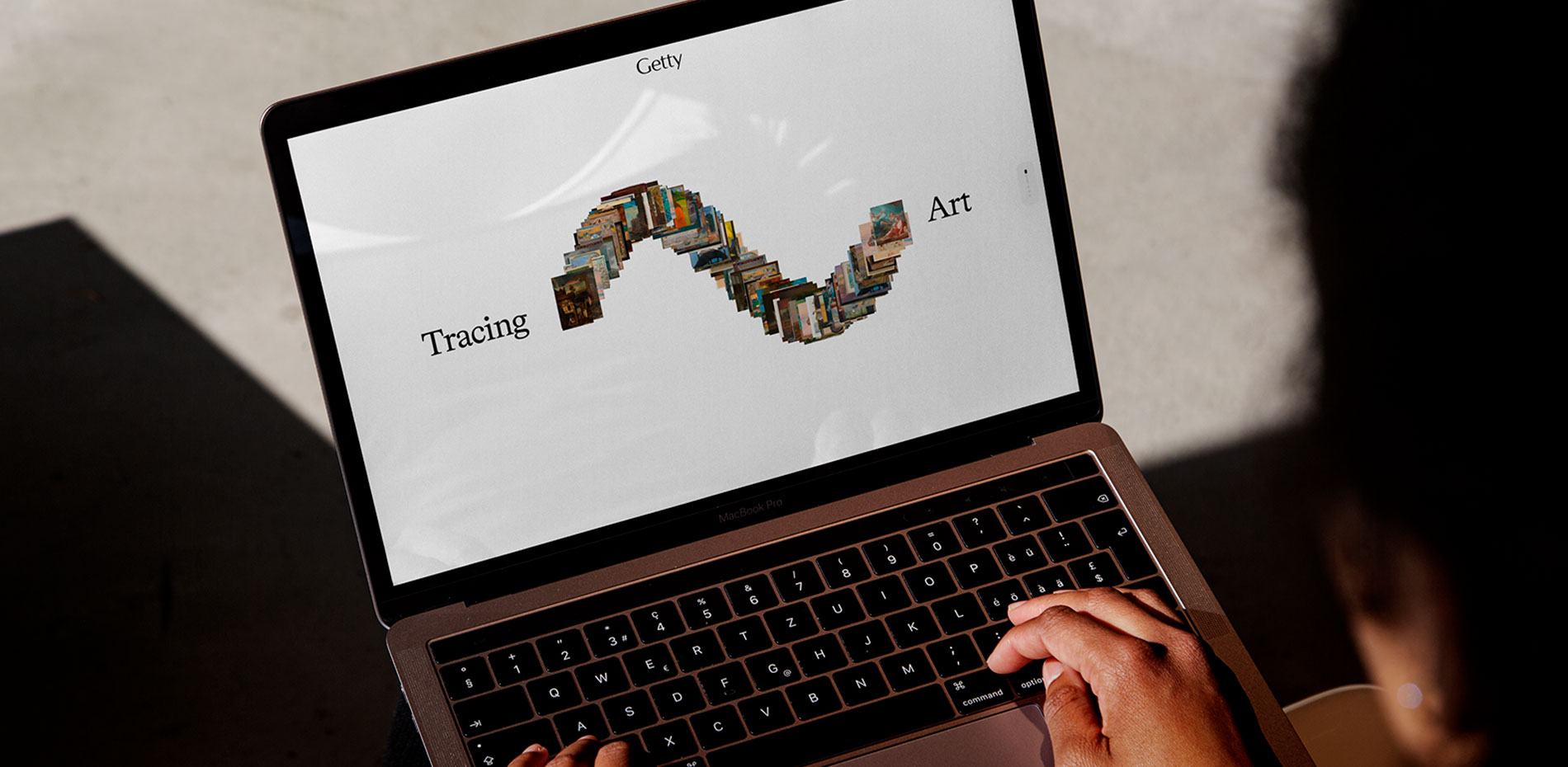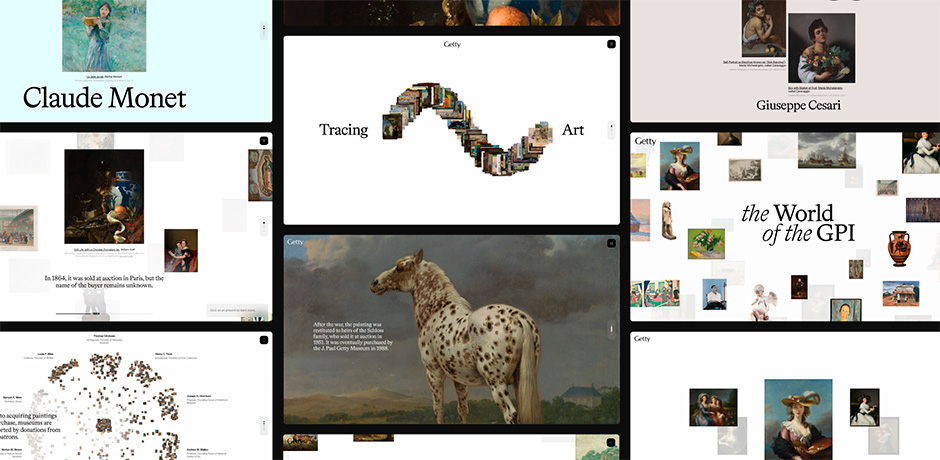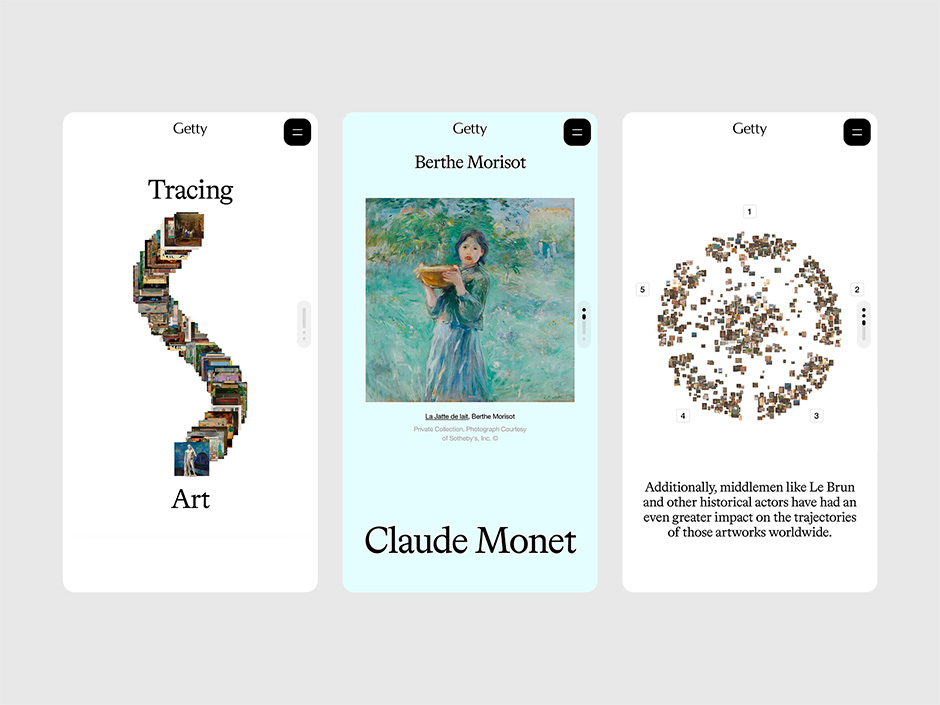
Every work of art travels through time, and each journey is unique. Art can change hands, cross oceans, and traverse different eras of history. Understanding that journey is essential to modern art provenance scholarship.
For decades, provenance research has been complex, fragmented, and largely inaccessible to those outside institutional circles. The redevelopment of the Getty Provenance Index and launch of Tracing Art aimed to address that challenge by unlocking more than 12 million provenance records for richer, more in-depth research.

Making the Research Accessible
The project emerged from a desire to support 21st-century research and make it more accessible to the public. While provenance research has traditionally been essential for museum collection management and academic inquiry, it now plays a central role in discussions around repatriation, ownership, and cultural heritage. By creating an interactive storytelling experience for the Getty Provenance Index, Tracing Art transforms a vast, static archive into a dynamic ecosystem of data, bridging past and present through innovative digital design.

Turning Data into Stories
The idea was to translate highly structured, often opaque provenance data into a compelling visual journey that explored the stories of people, places, and artworks across the centuries. A key conceptual pillar was transformation, where we demonstrated how linear records can become interconnected constellations of cultural movement. Users can explore the ownership history of a curated collection of individual paintings and discover larger patterns and major historical shifts across the cultural landscape.
Developing the User Experience
Close collaboration between Getty and Resn allowed us to carefully choreograph the content, UX strategy, and interaction design. This ensured the integrity of the scholarly research while developing a story that would resonate with users. The experience unfolds as a continuous narrative, divided into three chapters. A vertical progress bar with an expandable chapter menu provides context without interrupting the flow, ensuring Tracing Art was accessible and meaningful to audiences.
“Every detail was designed to honour the scholarship while effortlessly guiding users through the story.”
Technologies
Tracing Art transformed data from the Getty Provenance Index into a seamless, interactive experience. We manually curated selected artworks from the GPI and developed a technical framework that balanced performance with storytelling, ensuring that highly complex datasets and visualisations could be explored seamlessly by users. Several key technologies and libraries were used to achieve this:
Frontend Frameworks and Libraries
The frontend heavily integrates GSAP’s ScrollTrigger to orchestrate scroll-based timeline animations. Along with Lenis scroll smoother, this setup allows for inertia-driven scrolling where animations are triggered by the user’s scroll position. This ensures that transitions between sections feel intuitive and fluid.
For selected sections, we used THREE.js to render more immersive and dynamic scenes, like a sphere composed of hundreds of individual images of artworks. This effect was powered by a custom particle system using spritesheets, which enabled efficient rendering of hundreds of unique particles to maintain strong performance across devices.
Data & Asset Pipeline
Artworks selected from the GPI database were organised through a JSON file generated from a Google Doc (via CSV) containing names, descriptions, and links to the Getty’s online records. Copy was also structured locally in JSON format for consistency.
To ensure strong performance across devices, we built a custom asset compression pipeline. This used Sharp, a high-performance image processor for generating responsive WebP images at multiple sizes, alongside toktx, a GPU texture encoder that converts assets into lightweight .ktx textures optimised for real-time 3D rendering. Together, these tools allowed us to deliver fast, visually rich experiences without compromising quality.
Company Info
About Getty
Getty is a leading global arts organization committed to exhibiting, conserving, and understanding the world’s artistic and cultural heritage. Based in Los Angeles, Getty pursues its work with partners around the world, while sharing art, knowledge, and resources with the public online, and in-person at the Getty Center and Getty Villa.
About Resn
Resn is an award-winning creative agency reimagining digital for the future. For over 20 years, Resn has been a global pioneer of immersive experiences for the web and beyond. From its offices in New Zealand and the Netherlands, Resn partners with some of the world's most innovative brands to tell their stories and elevate their ideas for a global audience.
